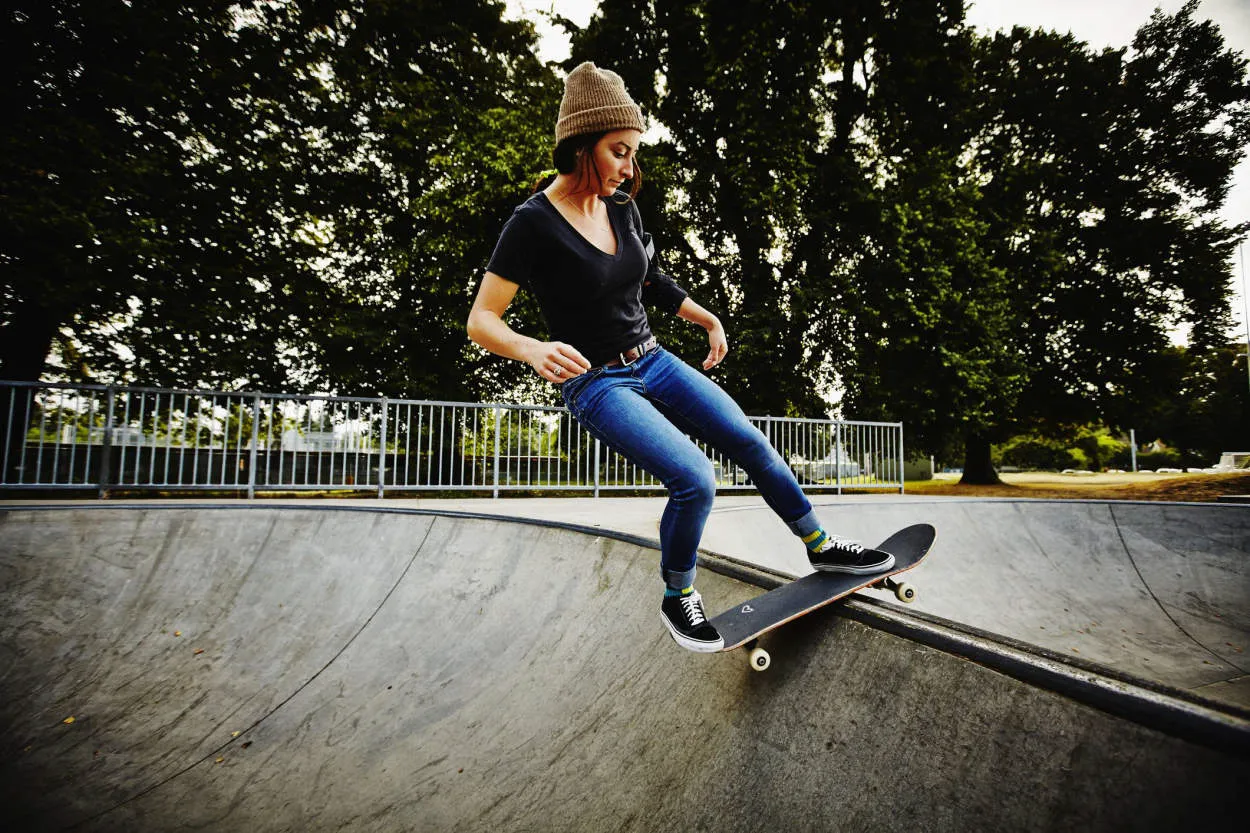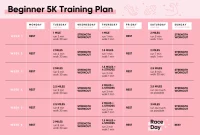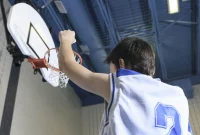Are you a beginner looking to master the art of skateboarding? Or maybe you’re already an experienced skater seeking to take your skills to the next level? In this article, we will provide you with essential tips and techniques to improve your skateboarding skills, whether you’re a beginner or advanced rider.
Mastering the Basics of Skateboarding
Skateboarding Skills: Tips for Beginners to Advanced
Skateboarding is a thrilling and challenging sport that requires practice, dedication, and mastery of the basics. Whether you’re a beginner just starting out or an advanced skateboarder looking to take your skills to the next level, here are some essential tips to help you along the way:
1. Get the Right Gear
Before you hit the skate park, make sure you have the right gear. Invest in a good quality skateboard that suits your style and preferences. Consider the size and shape of the board, the type of wheels, and the grip tape. Wearing protective gear such as a helmet, knee pads, and elbow pads is also crucial to ensure your safety while skateboarding.
2. Learn Proper Stance and Balance
Start by finding your comfortable stance, whether it’s regular (left foot forward) or goofy (right foot forward). Practice maintaining good balance on your skateboard by keeping your knees slightly bent and your weight centered over the board. This will help you stay in control and execute tricks more effectively.
3. Master Pushing and Braking
Pushing is the basic method of propelling yourself on a skateboard. Place one foot on the board and use the other foot to push off the ground. Gain momentum by pushing repeatedly, and remember to keep your balance as you ride. When it comes to braking, use your foot to drag on the ground or learn to perform a slide stop for more advanced control.
4. Start with Basic Tricks
For beginners, it’s important to start with basic tricks such as the ollie, kickturns, and manuals. The ollie is the foundation for many other tricks and involves popping the tail of the skateboard and sliding your front foot to level out the board in mid-air. Kickturns and manuals involve shifting your weight and mastering balance while moving.
5. Progress to Advanced Tricks
Once you’ve built a solid foundation with the basic tricks, you can progress to more advanced maneuvers. These include flip tricks like kickflips, heelflips, and varial flips, as well as grinds, slides, and aerial tricks. Remember to break down the trick into smaller components and practice each one separately before putting them all together.
6. Skate with Others and Seek Guidance
Skateboarding is a social activity, so don’t be afraid to join skate groups and connect with other skateboarders. Skating with others can provide motivation, inspiration, and the opportunity to learn new tricks. Additionally, consider seeking guidance from experienced skateboarders or enrolling in skateboarding lessons to improve your skills even further.
Remember, mastering the basics of skateboarding takes time and patience. Practice regularly, challenge yourself, and most importantly, have fun along the way. With dedication and perseverance, you’ll soon become a skilled skateboarder and be able to conquer any obstacle that comes your way.
Advanced Tricks and Techniques
Skateboarding is a dynamic sport that offers a variety of tricks and techniques to challenge riders of all skill levels. Whether you are a beginner looking to advance your skills or an experienced skateboarder seeking new challenges, here are some advanced tricks and techniques to take your skateboarding to the next level:
1. Ollie
The ollie is the foundation of most skateboarding tricks. To perform an ollie, pop the tail of the skateboard down while sliding your front foot up towards the nose. This will create a jump where the board leaves the ground. Mastering the ollie is essential before progressing to more advanced tricks.
2. Kickflip
The kickflip is one of the most popular tricks in skateboarding. Start with an ollie, but instead of sliding your front foot straight up, angle it slightly towards the edge of the board. Flick your front foot outwards to make the board flip 360 degrees. Use your back foot to level out the board in mid-air and land smoothly.
3. Grinds
Grinding involves sliding along an edge or rail with your trucks. There are various types of grinds, including 50-50s, boardslides, and feeble grinds. Approach the obstacle at an angle, pop an ollie, and land with your trucks on the edge or rail. Find your balance and slide across smoothly.
4. Manuals
Manuals involve riding on your back two wheels without the front wheels touching the ground. Practice by shifting your weight back and forth to maintain balance. The longer you can hold a manual, the more control you will have over your board.
5. 540 Flip
The 540 flip, also known as a “big spin kickflip,” combines a kickflip with a 540-degree body rotation. Execute a kickflip motion while jumping and spinning your body in the same direction. It’s a challenging trick that requires both technical skill and body control.
Remember, mastering advanced tricks and techniques takes practice, determination, and patience. Always prioritize safety by wearing protective gear and practicing in appropriate areas. Push yourself to try new tricks, but also listen to your body and take breaks when needed. Keep pushing your skateboarding skills and enjoy the ride!
Safety Tips for Skateboarders
Skateboarding is an exciting and challenging sport that requires a combination of skill, agility, and balance. Whether you are a beginner or an advanced skateboarder, it is essential to prioritize safety while enjoying this activity. Here are some safety tips to keep in mind:
1. Wear Protective Gear
Always wear the necessary protective gear while skateboarding. This includes a helmet, knee pads, elbow pads, and wrist guards. These protective items are crucial in preventing serious injuries in case of falls or accidents.
2. Choose the Right Skateboard
Ensure that your skateboard is suitable for your skill level and riding style. Beginners should opt for wider and more stable boards, while advanced riders can choose narrower boards for better maneuverability.
3. Start with Basic Skills
If you’re a beginner, begin with learning and mastering the basic skateboarding skills such as proper stance, pushing off, and braking. It is important to build a strong foundation before moving on to more advanced tricks and maneuvers.
4. Learn from Experienced Skateboarders
Seek guidance from experienced skateboarders or consider taking lessons from professional instructors. Learning from others who have mastered the sport can help you avoid common mistakes and progress faster.
5. Be Aware of Your Surroundings
Always be mindful of your surroundings and skate in areas specifically designated for skateboarding. Avoid crowded places, uneven terrain, or areas with heavy traffic to minimize the risk of accidents.
6. Warm Up and Stretch
Before any skateboarding session, warm up your muscles and stretch properly to prevent muscle strain and injuries. Pay special attention to your ankles, wrists, and neck to increase their flexibility and reduce the risk of sprains.
7. Practice Falling Safely
Falling is inevitable in skateboarding. Learn how to fall properly by tucking in your limbs and aiming to land on fleshy parts of your body, such as your buttocks or shoulder muscles. This technique can help reduce the impact and minimize the chance of serious injuries.
8. Stay Hydrated and Take Breaks
Skateboarding requires physical exertion, so it’s important to stay hydrated by drinking plenty of water before, during, and after your sessions. Take regular breaks to rest and avoid overexertion.
9. Respect Others and the Environment
Always be respectful of pedestrians, cyclists, and other skateboarders while enjoying your ride. Follow local regulations and avoid damaging public and private property. By being a responsible skateboarder, you contribute to a positive image of the skateboarding community.
By following these safety tips, you can minimize the risk of accidents and injuries while enjoying the thrill and freedom of skateboarding. Remember, safety should always be a top priority!
Choosing the Right Skateboard
When it comes to skateboarding, having the right skateboard that suits your needs and skill level is crucial. Whether you’re a beginner or an advanced rider, here are some key factors to consider when choosing the right skateboard for you:
1. Skateboard Size
The size of the skateboard deck plays a significant role in your riding experience. For beginners, it’s recommended to start with a wider deck (around 7.5 to 8 inches) as it offers better stability and balance. Advanced riders usually prefer narrower decks (7.5 inches or less) for more control and maneuverability.
2. Deck Material
Skateboard decks are commonly made of maple wood, but they can also be constructed using bamboo, carbon fiber, or other composite materials. Each material has its own unique characteristics, so consider factors like durability, stiffness, and flex when choosing the deck material that suits your preferences and riding style.
3. Skateboard Shape
Skateboard decks come in various shapes, including the classic popsicle shape, cruiser shape, and old school shape. The shape you choose depends on the type of skateboarding you want to do. Popsicle-shaped boards are versatile for performing tricks, while cruiser and old school shapes are better for cruising and transportation.
4. Skateboard Trucks
Trucks are the metal T-shaped components mounted on the underside of the skateboard deck. They are responsible for turning and maintaining stability. They should be chosen according to the width of the deck and your riding style. It’s important to select trucks that are compatible with the size of your skateboard to ensure proper maneuverability.
5. Skateboard Wheels
Skateboard wheels come in various sizes and hardness levels. Larger wheels (around 52-60mm) are better for smooth surfaces and higher speeds, while smaller wheels (around 48-52mm) are ideal for technical tricks and street skateboarding. The hardness of the wheels (measured in durometer) also affects the ride. Softer wheels (78A-87A) provide better grip, while harder wheels (88A-101A) are more durable and slide easier.
6. Personal Preference
Ultimately, your personal preference plays an essential role in choosing the right skateboard. Consider factors like graphics, brand reputation, and cost. It’s essential to try out different setups and seek advice from experienced skateboarders to find the perfect skateboard that matches your style and skill level.
The Culture and Community of Skateboarding
Skateboarding is more than just a sport or hobby; it is a vibrant culture and a close-knit community that spans the globe. From its humble origins in the 1950s, skateboarding has grown into a worldwide phenomenon with a rich history and a passionate following.
One of the defining aspects of skateboarding culture is its emphasis on individuality and self-expression. Skateboarders are known for their creativity, as they constantly push the boundaries of what is possible on a board. Whether it is mastering a new trick or designing unique graphics for their decks, skateboarders are constantly evolving and pushing the limits of their art.
In addition to individuality, skateboarding also fosters a strong sense of community. Skate parks, where skaters congregate to practice and socialize, serve as important gathering places for skateboarders of all ages and skill levels. These spaces allow skaters to connect, share tips, and learn from each other. The support and camaraderie within the skateboarding community make it a welcoming and inclusive space for all.
Skateboarding also has its own language and fashion. Skateboarders have developed a unique slang that is recognized and used by enthusiasts around the world. This linguistic code reinforces a sense of belonging and identity within the community. Similarly, skateboarders have their own distinctive style of clothing and footwear, often characterized by loose-fitting clothes, baggy jeans, and skate shoes.
Furthermore, skateboarding culture has had a significant influence on art, music, and film. Many skateboarders are not only passionate about riding, but also about the broader creative outlets associated with the sport. Skateboarding videos, for example, are an art form in their own right, showcasing the skills and style of various skateboarders while capturing the essence of the culture.
In conclusion, skateboarding is not just a sport or a recreational activity. It is a distinct subculture with a strong sense of community, individuality, and creativity. From its unique language and style to its impact on art and music, skateboarding has left an indelible mark on popular culture and continues to inspire and unite people all over the world.
Conclusion
In conclusion, mastering skateboarding skills is a journey that starts from the basics for beginners and progresses to more advanced techniques. It requires dedication, practice, and a willingness to push beyond one’s comfort zone. By following the tips outlined in this article, beginners can gradually improve their skills and confidently take on more challenging maneuvers. Remember, skateboarding is not just a sport, but a form of self-expression and creativity. So, keep pushing, keep practicing, and have fun on your skateboarding journey!




